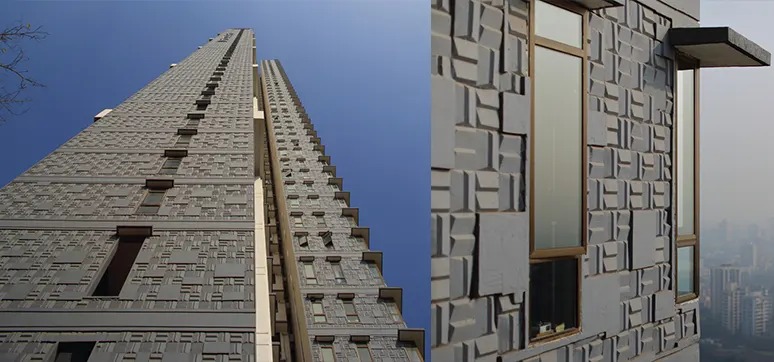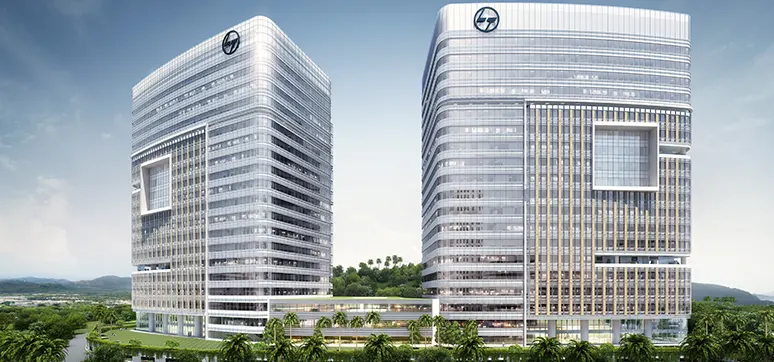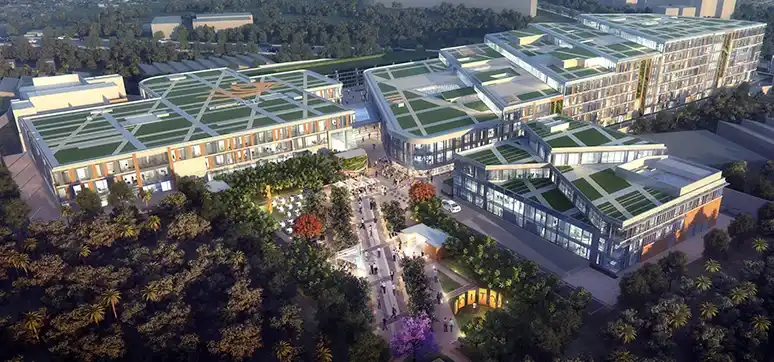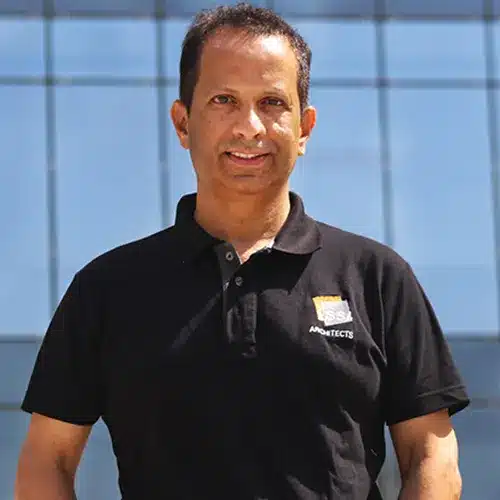In an interview with Ar. Sandeep Shikre President & CEO, Sandeep Shikre & Associates (SSA Architects) talks about his career as an architect, the turning points in his life, services offered by his firm, some of his favourite projects, the design process for façades and fenestrations in his projects, latest trends in façade and fenestration designs and technologies, some of his challenging projects and on architecture in post-covid times.
“Architecture is a comprehensive approach, which combines the hard skills of design and the soft skills of human connection and experience”. In a nutshell, it’s all about ‘Space, People and Happiness”
Could you tell us about your educational background, career and architectural experience?

After graduating in 1986 from the Academy of Architecture in Mumbai, I and my wife Ar. Alpa Shikre, who partners with me in both work and life, set up a design consultancy firm in 1989, under the name of Sandeep Shikre and Associates, popularly known as SSA Architects. SSA Architects has offices in Mumbai and Pune.
I believe architecture should seamlessly connect with the context and meet the end user’s needs. Architecture cannot be limited to any style and encompassed. It has to be contextual and completely anchored in its programme and style. The design has to create a meaning on-site, which is both deep and broad, where lives are influenced and behaviours shaped. Architecture always has to be versatile, organic & attuned to the nature around it. It’s a human-centric built form, designed by people, for people.
What inspired you to pursue a career in Architecture?
While growing up, I wasn’t exposed to architecture, and like every other Indian child, I wanted to be a cricketer. It was only during my teens that I started paying attention to the creative streak in me; combined with the inherent strength of a strong analytical mind and an understanding of mechanics, architecture became the natural choice. Architecture lured and fascinated me with its obvious potential for being a performance-based profession, where innovation would be a continuous dynamic process, where one can establish his own brand, which I find truly rewarding today.
Tell us about some turning points in your design career.

The first turning point was in 1996, our esteemed client, Kohinoor Group, offered us a 4 Star hospitality project, Kohinoor Continental. They gave us complete freedom to design, which is every architect’s delight and were open to experimenting with innovative materials. The curtain wall system and metal sheet cladding were first used in India for Kohinoor Continental Project. The stones used for this project were one of their kind in those days. Apart from being the first project to have that kind of façade, it was the first time international lighting and landscape consultants were involved. Our expedition for innovation and use of technology thus began, and since then, we have been leading.
The second turning point was Kokilaben Dhirubhai Ambani Hospital at Andheri, Mumbai. Dr. Nitu Mandke and Mrs Tina Ambani, Reliance ADA, showed great confidence in us. We got an opportunity to render our services for the state-of-the-art multi-specialty hospital. The third turning point was the iconic flagship project, Kohinoor Square – A 2.7 million Sq ft of high-rise mixed use development. A powerhouse of innovation and technology, the structure has excelled in architecture and engineering, be it architectural design, structure, envelope, MEP, or sustainability. The client Kohinoor Group once again gave us a huge responsibility to render our services as lead design consultants, whereby we had to have an international consultant and an array of sub-consultants under our umbrella. Today, Kohinoor Square speaks for itself.

What type of projects does SSA specialises in? What type of services do you offer to your clients?
The integration of architecture, interior design and construction management consultancy services under one roof makes SSA stand tall and apart, making them unique. With a diverse portfolio, SSA has to its credit numerous national and international awards and is one of the leading Architectural full-service firms in the country.

At SSA, we believe that architecture is not a niche specialty, and the focus is to be comprehensive, multifaceted and have a diverse portfolio. We provide comprehensive services encompassing all specialised fields across the spectrum of sectors from healthcare to hospitality, from residential to commercial, from education to mixed-use development, and from master planning to high-rises. I am humbled to state that they have won awards in each discipline.
What is your take on sustainable practice in architecture today?

Sustainability is in our DNA; we believe that it’s an integral part of the design. It’s not a static system but a dynamic one. The definition of sustainability may be redefined from time to time. It’s a continuous journey that’s all about adaptation. It’s currently going back to the basics of our ancient approach in a contemporary manner. It’s all about being Net Zero in water, energy, and carbon footprint.
I play an active role in promoting the awareness and the need for sustainable built forms. I am a USGBC LEED AP. Besides being an adviser to various forums, I am the Founding Member of CII-IGBC (Indian Green Building Council), Chairman of CII-IGBC Mumbai Chapter and Net Zero Carbon Rating System, and patron of CTBUH, The Council for Tall Building in Urban Habitat – USA (India Chapter). All our projects reflect the basic principles of sustainability. SSA has designed over 8 million Sq ft of green-certified projects, which includes Kohinoor Hospital. Kohinoor Hospital was Asia’s first USGBC (United States Green Building Council) platinum-certified healthcare building while being second globally.
How would you define your design process for façades and fenestrations in your projects?

Our process is driven by the context and aspirations of the client. We believe art and engineering are inseparable to create a people-centric built environment that is responsible, functional and contextual.
We begin by conducting a detailed study of context from a micro-climate perspective and the user requirement of the built environment to be designed. The type of façade application to be implemented is further analysed to suit various parameters such as acoustic, daylighting, natural ventilation, etc., and of course, the elephant in the room – to be cost-effective and meet the client’s budget. We prefer involving our associate consultants like structure, MEP, façade, etc., right from the initial design stage of the project to have an integrated design solution and a successful construction journey.
Needless to say, practicality, longevity, maintenance, durability, comfort, and safety is by default and uncompromisable. Please talk about some most preferred façade materials.?
Every project is required to be catered to in its own unique and contextual way, be it in terms of design or selection of materials. Any material selected must be environment-friendly with longevity and durability. These days the palette of materials is extremely vast and sophisticated, which lets the architect go for various possibilities in designing and creating the built form that is aesthetically pleasing while becoming an engineering marvel. I prefer local stone for its sheer strength, durability and looks, along with glass which is completely recyclable.
Could you please brief us on the latest trends in façade and fenestration designs and technologies?

Today, façade design and engineering are set to accomplish beyond one’s imagination. With rapidly progressing technology and the urge to go sustainable, today’s façade is becoming more advanced and sophisticated. With the ongoing challenges of urbanisation and pandemic situations, the scope for innovation has increased tenfold. The various trends can be considered regarding digital skills and technological wonders. Through digital skills, today, with tools like Building Integrated Management System, energy and daylighting simulation application and wind tunnel analysis, the building façade systems are now robust and dynamic.
Energy simulation with the help of energy modelling software encourages architects to analyse building designs and their systems at different stages in the design process. Building performance simulation software like E-Quest DOE evaluates energy requirements, consumption, glazing percentage/type, daylighting and HVAC design through various graphic interfaces. It encourages architects to be environment-sensitive by expressing the output achieved by passive and active solar design. The Corporate headquarters of Mudra Communication building in Mumbai function on 90 per cent natural daylight. The building design and window-to-wall ratio were governed by the parameters achieved through daylight simulation.

With the ever-changing climatic conditions and rise in tall buildings, Wind Tunnel Tests help predict wind loads and responses to structures, structural components, and cladding to various wind conditions. This technology has had a major effect on the construction cost of many tall buildings as it provides efficient statistical analysis and data of design load requirements for the buildings. The glass façade of India’s one of the tallest mixed-used projects, Kohinoor Square in Mumbai, was diligently designed with the help of wind tunnel analysis. As the project is located on the coastal edge of Mumbai, studying cyclonic winds was a critical aspect of the building design and selection of glass based on wind pressure and speed.
Regarding the application of design and innovation, architects and façade designers are inclining toward creating façades that holistically look into sustainable and wellness parameters. One of these is breathable façades through bio walls, perforated cladding and glass integrated with photovoltaic cells. The other is using recyclable materials for various façade elements.
Please throw some light on a few of your most favourite projects.

Like your children, all projects are special, and it’s as difficult as picking your favourite child. But if I have to name one, it would be Kohinoor Square. India’s 1st tallest mixed-use complex has been designed as an enigmatic & vibrant structure that combines office, residential, hospitality, retail, recreational facilities and public parking. The concept of diamond and the literal meaning of Kohinoor, “mountain of light”, formed the design concept for the iconic structure. The conceptualisation of the main tower during the design phase was the concept of a diamond, with each of its angular faceted surfaces catching and reflecting light at different angles depending on the sun’s movement.
Owing to this concept, the floor plans at each level have been designed with its corners chamfered to create facetted façades similar to a diamond. Many first for the Indian subcontinent were introduced during the execution of the Kohinoor Square, including the Jump Form Shuttering., compass-based vertical transportation, Double Glazed curtain wall, etc. The award from AIT – Germany is memorable as it was the first international award. This was received for the Mudra House. The design of this project has the unique characteristics of Indian ethnicity while celebrating the ancient Indian art form in a contemporary manner.
Tell us about some of your most challenging projects.
Every project has its own challenges because marrying the architect’s vision, client’s aspiration and contractor’s expertise is like an inter-cultural marriage. From the beginning, each stakeholder must understand and adapt to the strength and capabilities of the other. Although challenges may be small or big, sitting in the designer’s shoes, there is no discrimination between the projects. Architecture evolves out of addressing the challenges sensibly and appropriately.
One of my favourite projects, Kohinoor Square mentioned above, is also the most challenging and rewarding. The project was developed on 5 acres of mill land with 2.7 million square feet of built construction. This project has tested us on all fronts; our ability as a good designer, leadership qualities to convince the community while having more than 30 consultants under our umbrella, and our project management skills to manage the project on-site with 400 odd vendors to work with and take the batten into our hands to design and deliver the project playing the role of an LDC (Lead Design Consultant).
What is the future of architecture post-COVID? Has the Pandemic affected the design industry?

The future architect has exciting times ahead. He /She has to be agile with an ability to adapt. The lifestyle is constantly changing. The design approach must be based on detailed research analysis to stay ahead of the curve.
The design will have to be both adaptable and scalable to newer technologies. It will be about understanding sociology, people, and technology and integrating them into a human-centric design.
Tell us about your views that make your projects very unique.
SSA believes architecture is a creative science and a comprehensive approach that develops a human-centric built environment. This built environment must be contextual, functional, sustainable, and iconic. An architect cannot design in isolation; he has to have the ability to connect and engage with the end-user – be an extrovert and have a holistic approach. It combines hard skills of design & soft skills of human connection and experience. At SSA, it’s a hands-on, inside-out approach. We develop a design for a space to uplift the spirit of the people who occupy it. Our signature on the project is where the occupant is happy. In a nutshell, Architecture is all about “Space, People & Happiness”.
To conclude, architecture deals with lifestyle, and it is our endeavour to have continuous learning and explorations to understand the human psychic as a prime focus. Furthermore, the SSA team is committed to designing for environmental sustainability where our practice philosophy is to be nimble, facile, fluid, flexible and continuously move forward, where the role of Architecture and Architects is to involve with the rest of the society altogether.














